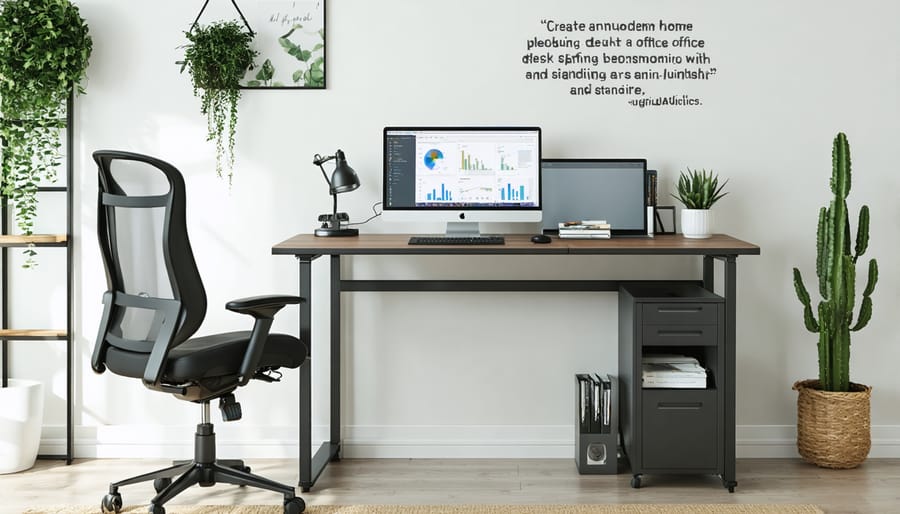Install a smart thermostat that automatically adjusts temperature based on your schedule, location, and preferences to optimize comfort and minimize energy waste. Upgrade to smart LED bulbs and fixtures that allow you to control brightness, color temperature, and schedules via smart home technology for personalized, efficient lighting. Plug electronics and appliances into smart power strips that cut standby power when devices are not in use. Integrate all your smart energy-saving devices into a central hub for easy monitoring and management from your smartphone.

Smart Thermostats: The Key to Effortless Savings
Top Smart Thermostat Picks
Our top picks for smart thermostats are the Nest Learning Thermostat and the ecobee SmartThermostat. The Nest thermostat uses intelligent algorithms to learn your temperature preferences and automatically adjusts settings for optimal comfort and energy savings. Its sleek design and intuitive app make programming a breeze. The ecobee SmartThermostat features advanced occupancy sensors to detect when you’re home or away, adjusting temperatures accordingly. It also integrates with room sensors for targeted comfort in specific areas. Both models are easy to install, with step-by-step guides and compatibility with most HVAC systems. By intelligently managing your home’s temperature, these smart thermostats can help reduce energy waste and lower your utility bills without sacrificing comfort. Whether you’re a tech-savvy DIYer or just looking to upgrade your home’s efficiency, these top picks offer innovative solutions for smarter, more sustainable living.

Smart Lighting: Illuminate Savings Room by Room
Best Smart Lighting Options
When it comes to smart lighting, the Philips Hue White and Color Ambiance Starter Kit is a top choice. This kit includes four LED bulbs and a bridge, allowing you to control your lights via the Hue app or voice assistants like Amazon Alexa and Google Assistant. For a more budget-friendly option, consider the Sengled Smart LED Soft White Starter Kit. It comes with four bulbs and a hub, and is compatible with Alexa, Google Assistant, and SmartThings. Another great option is the Lifx Mini White Smart Bulb, which doesn’t require a hub and can be controlled through Wi-Fi using the Lifx app, Alexa, Google Assistant, or Apple HomeKit. These smart lighting solutions not only provide convenience but also help you save energy by allowing you to set schedules, dim the lights, and turn them off remotely when not in use.

Smart Plugs and Power Strips: Slay Energy Vampires
Recommended Smart Plugs and Power Strips
Here are two smart plug options to help optimize your home’s energy efficiency:
The Kasa Smart Plug with Energy Monitoring tracks your device’s power usage in real-time via the Kasa app. Set schedules, timers, and even use voice commands through Alexa or Google Assistant to control your devices remotely.
For entertainment centers or home offices, consider the APC Smart Plug Surge Protector. It features six smart outlets, three always-on outlets, and two USB ports. Monitor energy consumption, turn outlets on/off remotely, and protect your electronics from power surges – all in one sleek power strip.
Putting It All Together: Building Your Smart Energy Saving System
Energy Saving with Smart Home Routines
Setting up smart home routines can automate energy-saving actions with minimal daily effort. For example, you can create a “Bedtime” routine that automatically adjusts your thermostat, turns off lights, and powers down electronics when you go to sleep. Similarly, a “Vacation” routine can ensure your home isn’t wasting energy while you’re away by setting your thermostat to an eco-friendly temperature and turning off unnecessary appliances. Smart home routines can also be triggered by your location, so your home can start saving energy as soon as you leave and return to a comfortable setting when you arrive. By investing a little time upfront to create these automated routines, you can sit back and let your smart home handle the energy-saving heavy lifting, helping you reduce your carbon footprint and utility bills with ease.
Conclusion
Smart home technology offers a wealth of opportunities to reduce your energy consumption and costs. From smart thermostats that optimize your heating and cooling to smart lights that dim automatically when not in use, these devices can add up to significant savings over time. Even small changes, like using smart power strips to eliminate standby power drain, can make a noticeable difference in your monthly bills.
The key is to start with the low-hanging fruit – those easy-to-implement changes that deliver the biggest bang for your buck. As you grow more comfortable with smart home tech, you can expand to other areas and fine-tune your setup for maximum efficiency. With a strategic approach and the right devices, you can enjoy a more comfortable, convenient home that’s also kinder to the environment and your wallet. The future of home energy management is smart – and the savings are yours for the taking.





